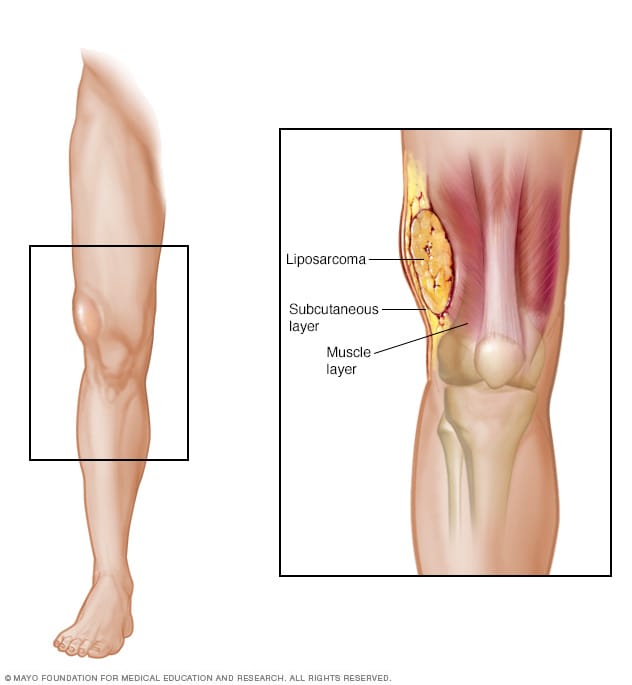Liposarcoma
Liposarcoma
overview
Liposarcoma

Liposarcoma
Liposarcoma is a type of cancer that occurs in fat cells in the body, most commonly in the muscles of the limbs or abdomen.
Liposarcoma is a rare type of cancer that begins in fat cells. Liposarcoma is considered a type of soft tissue sarcoma.
Liposarcoma can occur in fat cells in any part of the body, but most cases occur in the muscles of the limbs or the abdomen. Liposarcoma is most common in older adults, although it can occur at any age.
Treatment for liposarcoma typically involves surgery to remove the cancer. Other treatments, such as radiation therapy, may also be used.
Symptoms
The signs and symptoms of liposarcoma vary depending on the part of the body where the cancer forms.
Liposarcoma that forms in the arms and legs can cause:
- Ein wachsender Gewebeklumpen unter Ihrer Haut
- Schmerzen
- Schwellung
- Schwäche des betroffenen Gliedes
Liposarcoma that forms in the abdomen can cause:
- Bauchschmerzen
- Abdominale Schwellung
- Früheres Sättigungsgefühl beim Essen
- Verstopfung
- Blut im Stuhl
When to go to the doctor?
Make an appointment with your doctor if you have persistent signs or symptoms that worry you.
Causes
It is not clear what causes liposarcoma.
Doctors know that liposarcoma forms when a fat cell develops errors (mutations) in its genetic code. The mutations tell the cell to multiply quickly and to continue living when other cells would die. The abnormal cells that accumulate form a mass (tumor).
There are different types of liposarcomas. Some grow slowly and the cells remain in one area of the body. Other types grow very quickly and can spread to other areas of the body.
Liposarcoma treatment
Sources:
- Goldblum JR, et al. Liposarkom. In: Weichteiltumoren von Enzinger und Weiss. 6. Aufl. Philadelphia, Pennsylvania: Saunders Elsevier; 2014. http://www.clinicalkey.com. Abgerufen am 28. März 2017.
- Weichteilsarkom. Fort Washington, Pa.: Nationales umfassendes Krebsnetzwerk. http://www.nccn.org/professionals/physician_gls/f_guidelines.asp. Abgerufen am 28. März 2017.
- Mullen JT, et al. Klinische Merkmale, Bewertung und Behandlung des retroperitonealen Weichteilsarkoms. http://www.uptodate.com/home. Abgerufen am 28. März 2017.
- Ryan CWet al. Klinische Präsentation, Histopathologie, diagnostische Bewertung und Staging des Weichteilsarkoms. http://www.uptodate.com/home. Abgerufen am 28. März 2017.
- Riggin EA. Allscripts EPSi. Mayo Clinic, Rochester, Minnesota, 10. Januar 2017.

 Suche
Suche
 Mein Konto
Mein Konto